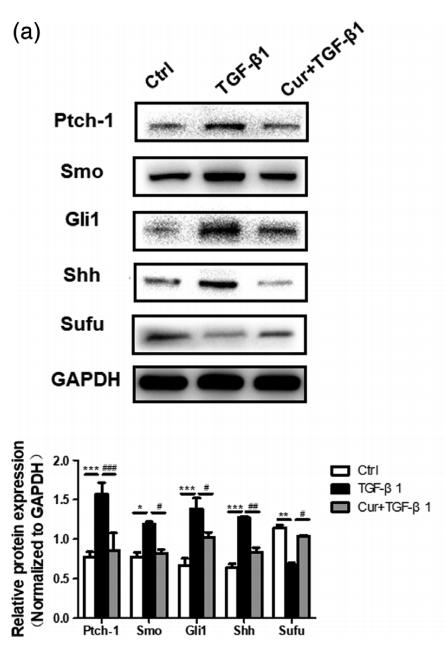SUFU Antibody - #DF7687
| Product: | SUFU Antibody |
| Catalog: | DF7687 |
| Description: | Rabbit polyclonal antibody to SUFU |
| Application: | WB IHC |
| Cited expt.: | WB |
| Reactivity: | Human |
| Prediction: | Bovine, Horse, Dog, Xenopus |
| Mol.Wt.: | 54 kDa; 54kD(Calculated). |
| Uniprot: | Q9UMX1 |
| RRID: | AB_2841158 |
Related Downloads
Protocols
Product Info
*The optimal dilutions should be determined by the end user. For optimal experimental results, antibody reuse is not recommended.
*Tips:
WB: For western blot detection of denatured protein samples. IHC: For immunohistochemical detection of paraffin sections (IHC-p) or frozen sections (IHC-f) of tissue samples. IF/ICC: For immunofluorescence detection of cell samples. ELISA(peptide): For ELISA detection of antigenic peptide.
Cite Format: Affinity Biosciences Cat# DF7687, RRID:AB_2841158.
Fold/Unfold
OTTHUMP00000020374; OTTHUMP00000020377; OTTHUMP00000020379; PRO1280; SU FU; SU(F)U; Su(fu); SUFU; SUFU negative regulator of hedgehog signaling; SUFU_HUMAN; SUFUH; SUFUXL; Suppressor of fused homolog (Drosophila); Suppressor of fused homolog;
Immunogens
A synthesized peptide derived from human SUFU, corresponding to a region within N-terminal amino acids.
Ubiquitous in adult tissues. Detected in osteoblasts of the perichondrium in the developing limb of 12-week old embryos. Isoform 1 is detected in fetal brain, lung, kidney and testis. Isoform 2 is detected in fetal testis, and at much lower levels in fetal brain, lung and kidney.
- Q9UMX1 SUFU_HUMAN:
- Protein BLAST With
- NCBI/
- ExPASy/
- Uniprot
MAELRPSGAPGPTAPPAPGPTAPPAFASLFPPGLHAIYGECRRLYPDQPNPLQVTAIVKYWLGGPDPLDYVSMYRNVGSPSANIPEHWHYISFGLSDLYGDNRVHEFTGTDGPSGFGFELTFRLKRETGESAPPTWPAELMQGLARYVFQSENTFCSGDHVSWHSPLDNSESRIQHMLLTEDPQMQPVQTPFGVVTFLQIVGVCTEELHSAQQWNGQGILELLRTVPIAGGPWLITDMRRGETIFEIDPHLQERVDKGIETDGSNLSGVSAKCAWDDLSRPPEDDEDSRSICIGTQPRRLSGKDTEQIRETLRRGLEINSKPVLPPINPQRQNGLAHDRAPSRKDSLESDSSTAIIPHELIRTRQLESVHLKFNQESGALIPLCLRGRLLHGRHFTYKSITGDMAITFVSTGVEGAFATEEHPYAAHGPWLQILLTEEFVEKMLEDLEDLTSPEEFKLPKEYSWPEKKLKVSILPDVVFDSPLH
Predictions
Score>80(red) has high confidence and is suggested to be used for WB detection. *The prediction model is mainly based on the alignment of immunogen sequences, the results are for reference only, not as the basis of quality assurance.
High(score>80) Medium(80>score>50) Low(score<50) No confidence
Research Backgrounds
Negative regulator in the hedgehog/smoothened signaling pathway. Down-regulates GLI1-mediated transactivation of target genes. Down-regulates GLI2-mediated transactivation of target genes. Part of a corepressor complex that acts on DNA-bound GLI1. May also act by linking GLI1 to BTRC and thereby targeting GLI1 to degradation by the proteasome. Sequesters GLI1, GLI2 and GLI3 in the cytoplasm, this effect is overcome by binding of STK36 to both SUFU and a GLI protein. Negative regulator of beta-catenin signaling (By similarity). Regulates the formation of either the repressor form (GLI3R) or the activator form (GLI3A) of the full-length form of GLI3 (GLI3FL). GLI3FL is complexed with SUFU in the cytoplasm and is maintained in a neutral state. Without the Hh signal, the SUFU-GLI3 complex is recruited to cilia, leading to the efficient processing of GLI3FL into GLI3R. When Hh signaling is initiated, SUFU dissociates from GLI3FL and the latter translocates to the nucleus, where it is phosphorylated, destabilized, and converted to a transcriptional activator (GLI3A). Required for normal embryonic development (By similarity). Required for the proper formation of hair follicles and the control of epidermal differentiation (By similarity).
Polyubiquitinated at Lys-257 by the SCF(FBXL17) complex, leading to its subsequent degradation and allowing the release of GLI1 for proper hedgehog/smoothened signal transduction. Ubiquitination is impaired by phosphorylation at Ser-342, Ser-346, Ser-352 and Thr-353.
Phosphorylation at Ser-342, Ser-346, Ser-352 and Thr-353 prevents ubiquitination by the SCF(FBXL17) complex.
Cytoplasm. Nucleus.
Ubiquitous in adult tissues. Detected in osteoblasts of the perichondrium in the developing limb of 12-week old embryos. Isoform 1 is detected in fetal brain, lung, kidney and testis. Isoform 2 is detected in fetal testis, and at much lower levels in fetal brain, lung and kidney.
Belongs to the SUFU family.
Research Fields
· Environmental Information Processing > Signal transduction > Hedgehog signaling pathway. (View pathway)
· Human Diseases > Cancers: Overview > Pathways in cancer. (View pathway)
· Human Diseases > Cancers: Specific types > Basal cell carcinoma. (View pathway)
References
Application: WB Species: human Sample: HIBECs
Restrictive clause
Affinity Biosciences tests all products strictly. Citations are provided as a resource for additional applications that have not been validated by Affinity Biosciences. Please choose the appropriate format for each application and consult Materials and Methods sections for additional details about the use of any product in these publications.
For Research Use Only.
Not for use in diagnostic or therapeutic procedures. Not for resale. Not for distribution without written consent. Affinity Biosciences will not be held responsible for patent infringement or other violations that may occur with the use of our products. Affinity Biosciences, Affinity Biosciences Logo and all other trademarks are the property of Affinity Biosciences LTD.


